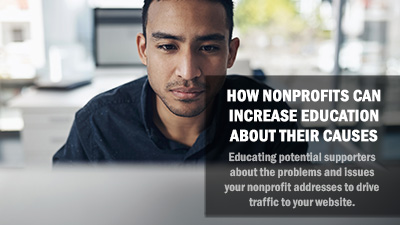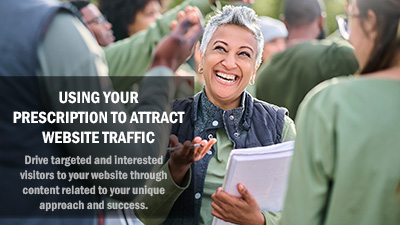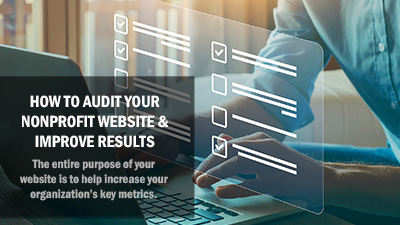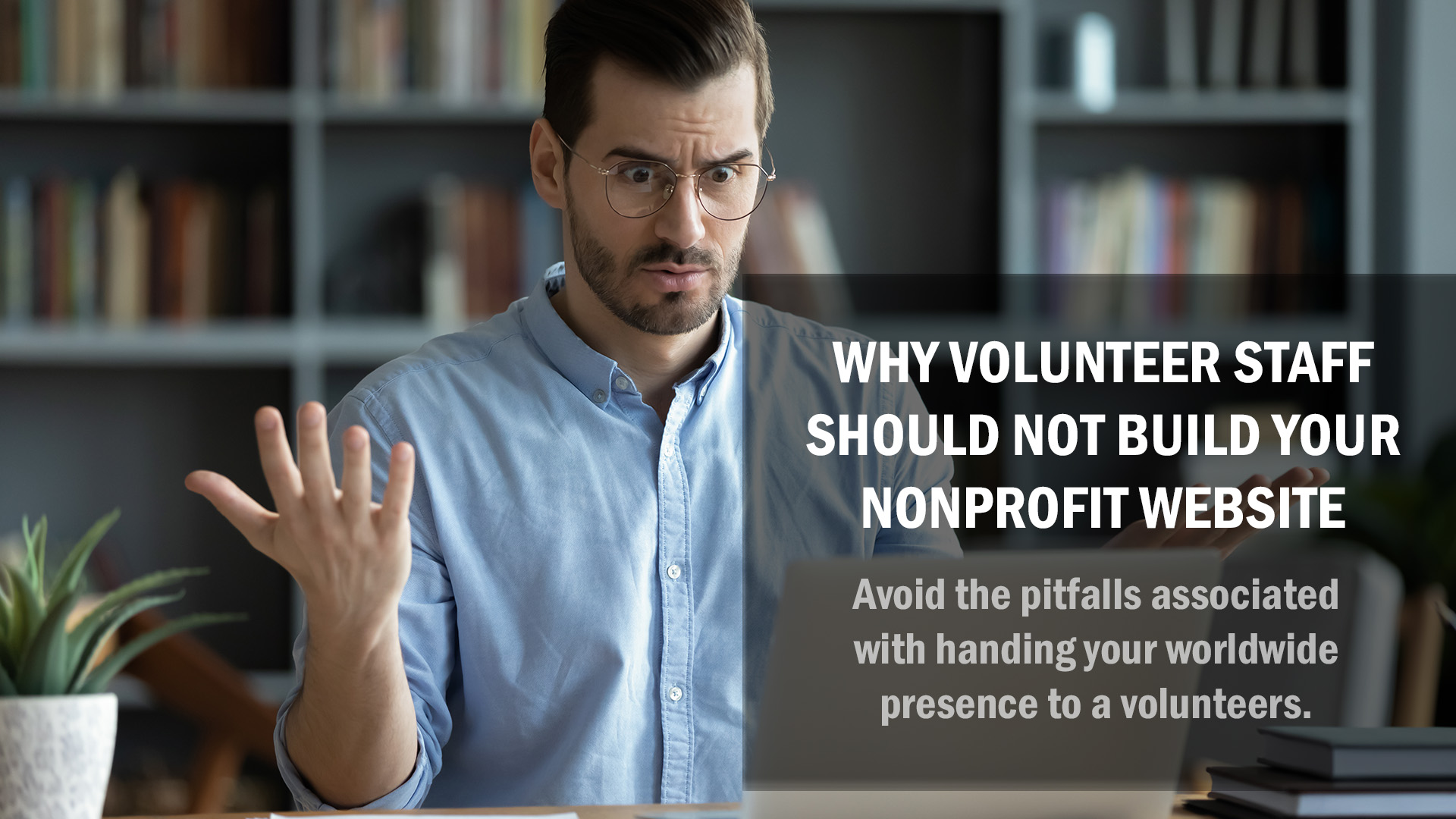How Nonprofits Can Increase Education About Their Causes
 In the world of nonprofits, raising awareness and educating the public about the causes you champion is vital. Effective education not only informs but also inspires action and support. One of the most powerful tools at your disposal is your website. By driving traffic to your website, you can significantly boost your educational outreach. Here, we delve into the top strategies for increasing education about the problems and issues your nonprofit addresses.
In the world of nonprofits, raising awareness and educating the public about the causes you champion is vital. Effective education not only informs but also inspires action and support. One of the most powerful tools at your disposal is your website. By driving traffic to your website, you can significantly boost your educational outreach. Here, we delve into the top strategies for increasing education about the problems and issues your nonprofit addresses.
1. Content Marketing
1.1 Web Pages
Creating an easy-to-understand and engaging collection of web pages can offer visitors a point-and-click environment that helps them learn more about the issues and problems your nonprofit addresses.
Key Strategies:
- Issue Summaries: Create abbreviated summaries of the issues and problems that lead to more in-depth breakouts about their various aspects.
- Aspect Breakouts: Create specialized pages that focus on various aspects of the issues and problems to attract various audiences and interest levels.
- “Kaleidoscoping”: Create a way for your visitors to understand that the complexities of the problems and issues while also gaining a general understanding about its parts.
1.2 Blog Posts
Creating and maintaining a blog on your nonprofit's website is one of the most effective ways to educate your audience. Regularly published blog posts can cover a variety of topics related to your cause, providing readers with in-depth insights and up-to-date information.
Key Strategies:
- Current Events: Write about recent news related to your cause. This could include legislative changes, new research findings, or significant events.
- In-Depth Analyses: Provide detailed analyses of issues, helping your audience understand the complexities and nuances.
- Personal Stories: Share stories from individuals impacted by the issue. Personal narratives can be powerful in illustrating the human side of the problem.
1.3 Educational Resources
Offering downloadable educational resources can enhance your credibility and provide your audience with valuable information that they can refer to and share.
Key Strategies:
- Whitepapers: In-depth reports on specific issues, including research findings and expert opinions.
- eBooks: Comprehensive guides that cover various aspects of the cause.
- Infographics: Visual representations of data and information that are easy to understand and share.
- Video Libraries: Collections of educational videos about the key issues and problems your organization addresses.
2. Search Engine Optimization (SEO)
2.1 Keyword Research
SEO is critical in ensuring that your content reaches the right audience. Keyword research helps you identify the terms and phrases that potential visitors are searching for related to your cause.
Key Strategies:
- Identify Keywords: Use tools like Google Keyword Planner, SEMrush, or Ahrefs to find relevant keywords.
- Long-Tail Keywords: Focus on long-tail keywords (phrases with three or more words) as they often have less competition and more specific search intent.
2.2 On-Page SEO
Optimizing your website's pages can improve your search engine rankings, making it easier for people to find your content.
Key Strategies:
- Meta Descriptions: Write compelling meta descriptions that accurately summarize your content and include relevant keywords.
- Headers: Use header tags (H1, H2, H3) to structure your content and include keywords where appropriate.
- Image Alt Text: Use descriptive alt text for images to improve accessibility and SEO.
3. Social Media Campaigns
3.1 Awareness Campaigns
Social media platforms are invaluable for spreading awareness and driving traffic to your website. Running targeted campaigns can help you reach a broader audience.
Key Strategies:
- Educational Posts: Share snippets of information and link back to detailed content on your website.
- Hashtags: Use relevant hashtags to increase the visibility of your posts.
- Collaborations: Partner with influencers or other organizations to amplify your reach.
3.2 Video Content
Video content is highly engaging and can effectively communicate complex issues in an accessible format.
Key Strategies:
- Educational Videos: Create short videos explaining key issues related to your cause.
- Webinars: Host live or recorded webinars featuring experts and Q&A sessions.
- Storytelling: Use video to tell powerful stories about the people and communities affected by the issues.
4. Partnerships and Collaborations
4.1 Guest Blogging
Collaborating with other websites and blogs can introduce your nonprofit to new audiences and drive traffic back to your site.
Key Strategies:
- Write Guest Posts: Offer to write informative articles for other blogs in your niche.
- Invite Guest Writers: Invite experts and influencers to contribute to your blog, bringing their audience with them.
4.2 Influencer Partnerships
Partnering with influencers who are passionate about your cause can help you reach a larger audience.
Key Strategies:
- Sponsored Content: Work with influencers to create sponsored posts that highlight your nonprofit’s mission.
- Joint Campaigns: Collaborate on campaigns that include both your content and the influencer’s platform.
Conclusion
Educating the public about the problems and issues your nonprofit addresses is essential for building awareness and support. By leveraging content marketing, SEO, social media campaigns, and partnerships, you can drive targeted and engaged traffic to your website. These strategies not only enhance your online presence but also amplify your impact, helping you achieve your mission more effectively.
Implementing these tactics will ensure that your nonprofit’s website becomes a central hub for education, engagement, and action, ultimately driving positive change for the causes you champion.
Bonus Action Point: Take 10 minutes to write down as many aspects of the problem or issue your nonprofit addresses as you can think of. Break bigger problems/issues into as many smaller bullet points as possible. This will be the basis for the expansion of the information on your website.
Using Your Prescription to Attract Website Traffic
As a nonprofit organization, driving traffic to your website is crucial for increasing awareness, engagement, and support for your cause. A well-strategized approach to providing compelling information about the prescriptions you offer can significantly enhance your online presence.
How To Audit Your Nonprofit Website and Improve Results
If your nonprofit's website isn't contributing to your most important key metrics, there is a simple process you can go through to improve it. Using goals (not best practices), you can increase the reach, connections, and contributions your website drives month after month.
Why Volunteer Staff Should Not Build Your Nonprofit Website
We hear about it all the time. Because resources are low and what a website truly means for their organizations isn’t clear, nonprofit leaders use volunteer staff, teenagers in high school, or a donor’s resources to help them establish their web presence. It seems like a good deal - the volunteer meets the needs of the nonprofit and the nonprofit avoids investing money and time into a website. But, when you explore the problems associated with doing this, you uncover the true cost of using volunteers to create your worldwide presence.



